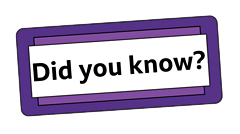
The formula H₂O shows that water is made from two atoms of hydrogen (H) bonded to one atom of oxygen (O).
Watch this video to learn more about the periodic table, chemical symbols and
close formulae Plural of formula. .

A lot of the element names have come from Latin. The Latin name for sodium was 'natrium'.
Which element has the symbol N?
Show answer Hide answerThere are 118 chemical elements and they are listed on the periodic table in a specific order.

Scientist Marie Curie discovered two elements: radium and polonium. She discovered that radium could help the body fight cancer cells. Marie became the first woman to win a Nobel Prize.
What are the only two letters of the alphabet to not appear on the periodic table?
Show answer Hide answerWatch this video where Dr Tim explains how
close compound A pure substance made from two or more elements which are chemically bonded in a fixed ratio. can be represented by chemical formulae.
Video Transcript Video TranscriptDr. Tim: Water isn't an element, it's a compound. And, remember, we only show pure elements on the periodic table.
Katie: So what's a compound then?
Dr. Tim: A compound is a pure substance which is made from more than one element. And atoms, they chemically bond together in a fixed ratio to make a compound, and this means we can describe these compounds with a chemical formula.
So, since water is a compound, it means its chemical formula is made up from elements that we can pick from the periodic table.
Katie: So which chemicals is water made up of?
Dr. Tim: It's made of two elements. Oxygen, which you've already found, and hydrogen.
Katie: OK, let me find hydrogen. OK, there it is. So H is H₂O! Water is H₂O. Of course it is. What's the number two all about?
Dr. Tim: Let me write it down to explain.
We've got water with the chemical formula H₂O. Just like that. Now, we always put these numbers down at the bottom when we're writing chemical formula and this number, it shows how many of each type of atom we have in the compound. And the two is because for every one oxygen atom there are two hydrogen atoms in water. And if we were to draw the molecule, it would look a little bit like this.
So we've got our oxygen atom and then we've got our two hydrogen atoms. H₂O, water. When a compound forms there isn't always an equal number of elements. For example, water, there are two hydrogens and just one oxygen. We use the numbers to show how many of each atom there are in a compound.
Now, another one you'll have heard of is carbon dioxide.
Katie: Yes, so that's carbon and dioxide. So is oxide oxygen?
Dr. Tim: Yes, perfect.
Katie: And 'di' means two, so dioxide means two oxygens?
Dr. Tim: Absolutely spot on, exactly right.
Katie: So, carbon dioxide means a carbon plus two oxygens. That's CO₂.
Dr. Tim: Excellent. So if we write this down, we've got CO₂. We've got one carbon atom and two oxygen atoms. And if we draw it, it would look a little bit like this. So we've got our one carbon atom, we've got one oxygen there and another oxygen there. CO₂, carbon dioxide.